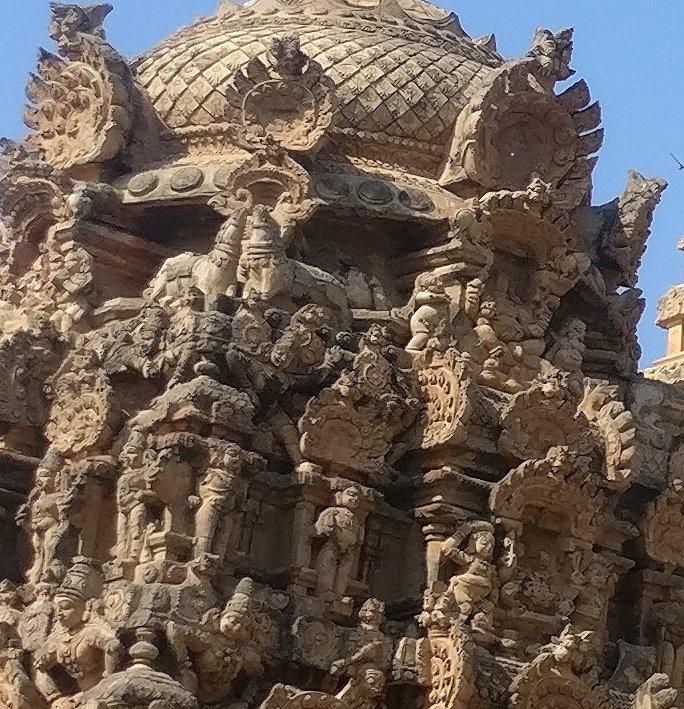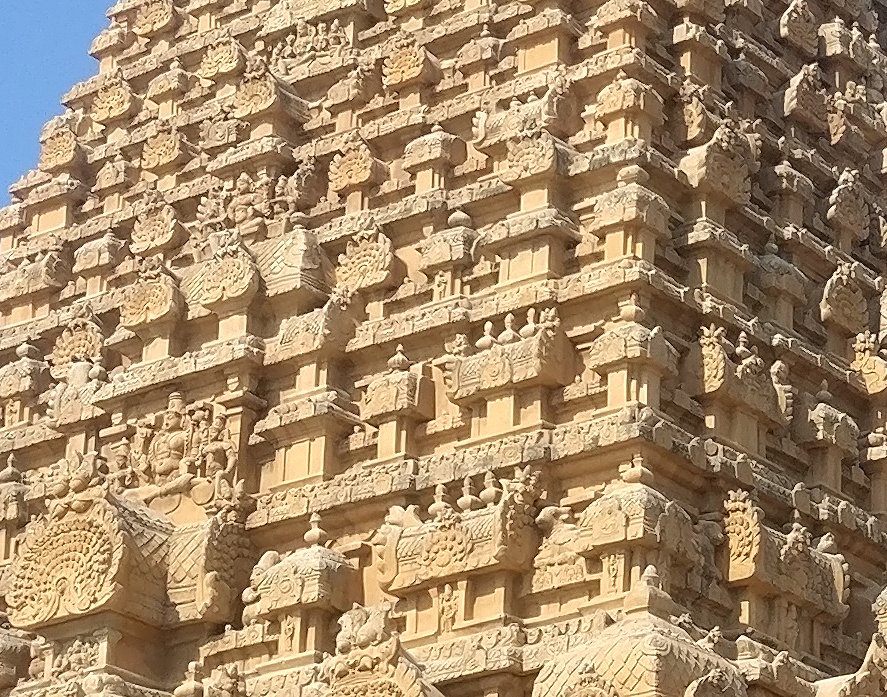Brihadeshwara Temple – Outstanding Example Of Chola Architecture In Tamil Nadu, India
A. Sutherland - AncientPages.com - Brihadeshwara Temple (also known as the Big Temple) is an outstanding example of Chola architecture. It is another remarkable sacred shrine in Gangaikonda Cholapuram, Ariyalur district, Tamil Nadu, India, dedicated to Lord Shiva.
The Brihadeeswara Temple view from the back. The two gopuras (temple entrance tower) can be seen in the back. Image credit: Aravindreddy.d - CC BY-SA 3.0
Timeless, formless, limitless, and transcendent Lord Shiva represents many fearsome and benevolent aspects, and many spectacular temples are dedicated to this powerful Hindu god. Along with Vishnu and Brahma, Shiva forms a part of the Holy Trinity, which is highly revered by Hindus worldwide.
The temple - one of the Great Living Chola Temples - shows the Dravidian architectural style and was built over 1003-1010 AD by a renowned king Raja Raja Chola I, who ruled over the Chola dynasty of southern India between 985 and 1014 AD.
This impressive and still well-preserved sacred shrine was not constructed by accident but is closely associated with the ruler's inspiration, which suddenly came to him in a dream he had during his visit to Sri Lanka.
In the temple, a famous portrait of Raja Raja Cholan depicts him paying homage to Lord Natarajar – Shiva, Lord of the Dance.
The Brihadeeswara Temple is dedicated to Lord Shiva. Image credit: Aravindreddy.d - CC BY-SA 3.0
The Chola kings strongly emphasized the importance of temples, which were gatherings for economic, political, and cultural activities and all-important official ceremonies. Indeed, the magnificent Chola temples testify to the excellent achievements of the Chola architects, engineers, and artisans.
Interestingly, dated to 1010 AD, the temple's construction is unique due to the diversion from the typical building norms of having a tall gopuram (spire over the entrance to the temple) and a smaller vimana (the tower over the sanctum).
As for the Brihadeshwara Temple, the structure's Vimana (216 ft (66 m) high and the tallest in the world) mounts high instead, while the gopuram remains stunted.
Another unique feature is that the temple is entirely made of more than 130,000 tons of granite, and it is said that its nearest source is approximately 60 km to the west of the temple. Its fortified walls were possibly added in the 16th century.
Brihadeeswara Temple. Image credit: Aravind Reddy.d - CC BY-SA 3.0
The Kumbam of the temple is bulbous. The temple's massive structure (dome) on the top is carved out of a single rock and weighs around 80 tons.
Another beautiful attraction of the Brihadeshwara Temple is a massive Shiva lingam in a two-storied sanctum. The huge Nandi, the sacred bull, which was Shiva's bull vehicle, and this figure - carved out of a single stone measuring about 16 ft (4.9 m) long and 13 ft (4.0 m) high was a thousand years ago placed at the portal.
The Nandi statue is one of India's giant statues of Nandi bulls.
The sanctum's inner wall is decorated with sculptures showing 108 dance poses, the so-called "karmas," and all of them are performed by Lord Shiva, the divine cosmic dancer himself. However, the most famous of them is his dance called Tandavam (or Nadanta), of which the pose and artwork are mentioned in many Hindu texts and known from many stone reliefs.
Many shrines, 250 lingams, and pillared halls complete the temple's ground. Additionally, several depictions include nartakis (or dancers) that show eighty-one of a hundred and eight karanas (synchronized movements of feet and hands) in Indian classical dance, Bharata Natyam.
Ancient records confirm that the Brihadeshwara Temple was a platform for talented dancers to showcase their talent.
These depictions are the first of their kind. The temple also possesses several inscriptions that mention the different types of jewels used during the temple's construction period. A total of twenty-three different types of pearls, eleven varieties of diamonds, and rubies are mentioned in these inscriptions. Each of these jewels is described in detail.
Written by – A. Sutherland - AncientPages.com Senior Staff Writer
Copyright © AncientPages.com All rights reserved. This material may not be published, broadcast, rewritten or redistributed in whole or part without the express written permission of AncientPages.com
More From Ancient Pages
-
 Steamship SS Mesaba Sent Warning To RMS Titanic In 1912 – Her Wreck is Now Identified
Archaeology | Sep 27, 2022
Steamship SS Mesaba Sent Warning To RMS Titanic In 1912 – Her Wreck is Now Identified
Archaeology | Sep 27, 2022 -
 Human And Neanderthal Brains Have A Surprising ‘Youthful’ Quality In Common – New Study
Featured Stories | Jan 6, 2023
Human And Neanderthal Brains Have A Surprising ‘Youthful’ Quality In Common – New Study
Featured Stories | Jan 6, 2023 -
 What Were Victorian Bathing Machines?
Ancient History Facts | Jun 9, 2018
What Were Victorian Bathing Machines?
Ancient History Facts | Jun 9, 2018 -
 Mysterious Denisovans – New Study Offers New Evidence
Fossils | Mar 25, 2021
Mysterious Denisovans – New Study Offers New Evidence
Fossils | Mar 25, 2021 -
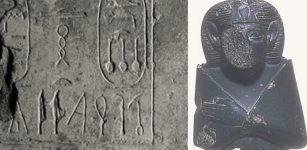 Sobekneferu: First Female Pharaoh In Ancient Egypt
Featured Stories | Mar 9, 2019
Sobekneferu: First Female Pharaoh In Ancient Egypt
Featured Stories | Mar 9, 2019 -
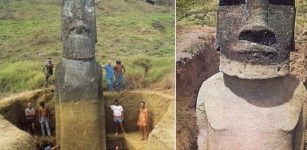 Easter Island’s Statues Reveal Bodies Covered With Unknown Ancient Petroglyphs
Archaeology | Jan 21, 2014
Easter Island’s Statues Reveal Bodies Covered With Unknown Ancient Petroglyphs
Archaeology | Jan 21, 2014 -
 Ming-Era Two Shipwrecks With 100,000 Ancient Relics Examined By Scientists
Archaeology | May 30, 2023
Ming-Era Two Shipwrecks With 100,000 Ancient Relics Examined By Scientists
Archaeology | May 30, 2023 -
 Nabopolassar: Father Of Nebuchadnezzar II And King Of Babylon Rose To Power Thanks To His Dedication To Gods Nabu And Marduk
Featured Stories | Jan 11, 2019
Nabopolassar: Father Of Nebuchadnezzar II And King Of Babylon Rose To Power Thanks To His Dedication To Gods Nabu And Marduk
Featured Stories | Jan 11, 2019 -
 Mystery Of The Faceless Creature – Ancient And Modern Sightings
Featured Stories | Jun 19, 2018
Mystery Of The Faceless Creature – Ancient And Modern Sightings
Featured Stories | Jun 19, 2018 -
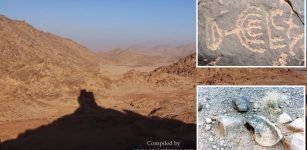 Ancient Hebrew Inscription Reveals Location Of Biblical Mount Sinai
Archaeology | Nov 21, 2019
Ancient Hebrew Inscription Reveals Location Of Biblical Mount Sinai
Archaeology | Nov 21, 2019 -
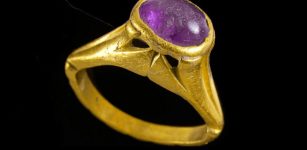 Ancient Greek Amethyst Ring To Ward Off A Hangover Discovered At The World’s Largest Byzantine Wine Factory In Yavne, Israel
Archaeology | Nov 12, 2021
Ancient Greek Amethyst Ring To Ward Off A Hangover Discovered At The World’s Largest Byzantine Wine Factory In Yavne, Israel
Archaeology | Nov 12, 2021 -
 Ancient Race Of Star Worshippers And Secret Message Stored In Unusual Monument
Civilizations | Jun 11, 2018
Ancient Race Of Star Worshippers And Secret Message Stored In Unusual Monument
Civilizations | Jun 11, 2018 -
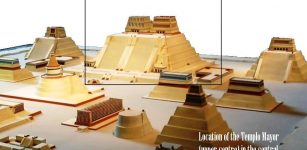 Templo Mayor – Sacred Aztec Complex Dedicated To Gods Tlaloc And Huitzilopochtli Who Were Usually Appeased With Human Sacrifices
Featured Stories | Jan 23, 2018
Templo Mayor – Sacred Aztec Complex Dedicated To Gods Tlaloc And Huitzilopochtli Who Were Usually Appeased With Human Sacrifices
Featured Stories | Jan 23, 2018 -
 On This Day In History: Ensisheim Meteorite Fell To Earth – On Nov 7, 1492
News | Nov 7, 2016
On This Day In History: Ensisheim Meteorite Fell To Earth – On Nov 7, 1492
News | Nov 7, 2016 -
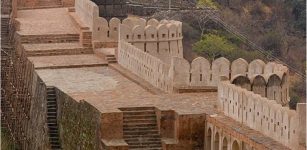 Magnificent And Massive Great Wall Of India – Astonishing Ancient Structure Shrouded In Secrecy
Civilizations | Jul 7, 2015
Magnificent And Massive Great Wall Of India – Astonishing Ancient Structure Shrouded In Secrecy
Civilizations | Jul 7, 2015 -
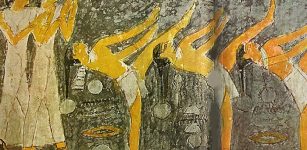 How Important Was Dance In Ancient Egypt And What Purpose Did It Serve?
Ancient History Facts | May 5, 2021
How Important Was Dance In Ancient Egypt And What Purpose Did It Serve?
Ancient History Facts | May 5, 2021 -
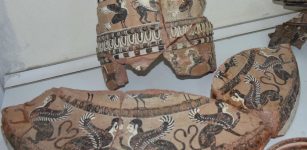 One Of A Kind 2,500-Year-Old Ritual Wash Basin Painted With Mythological Figures Discovered In The Ancient City Of Klazomenai
Archaeology | Oct 1, 2022
One Of A Kind 2,500-Year-Old Ritual Wash Basin Painted With Mythological Figures Discovered In The Ancient City Of Klazomenai
Archaeology | Oct 1, 2022 -
 Danger Lurking In The Woods – Unknown Force And Mysterious Lights – Part 1
Featured Stories | Jul 6, 2018
Danger Lurking In The Woods – Unknown Force And Mysterious Lights – Part 1
Featured Stories | Jul 6, 2018 -
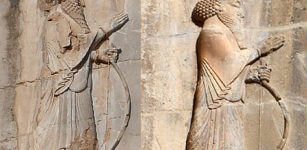 Naqsh-e Rostam: Spectacular Tomb Complex With Rock Reliefs From Elamite To Sasanian Times
Civilizations | Nov 15, 2018
Naqsh-e Rostam: Spectacular Tomb Complex With Rock Reliefs From Elamite To Sasanian Times
Civilizations | Nov 15, 2018 -
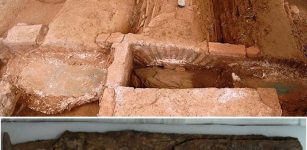 Gothic Warrior With Rare Sword Unearthed In Thessaloniki, Greece
Archaeology | Apr 23, 2021
Gothic Warrior With Rare Sword Unearthed In Thessaloniki, Greece
Archaeology | Apr 23, 2021


